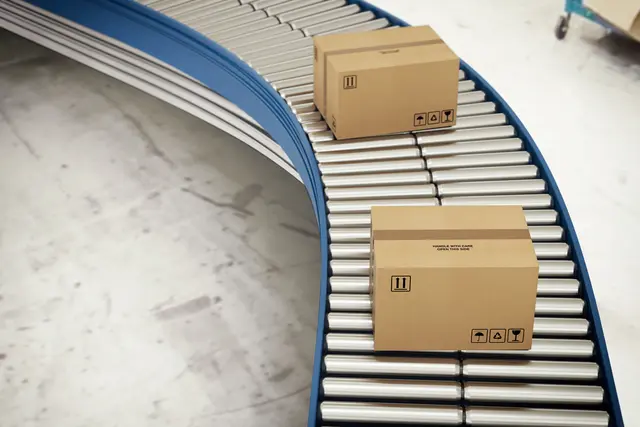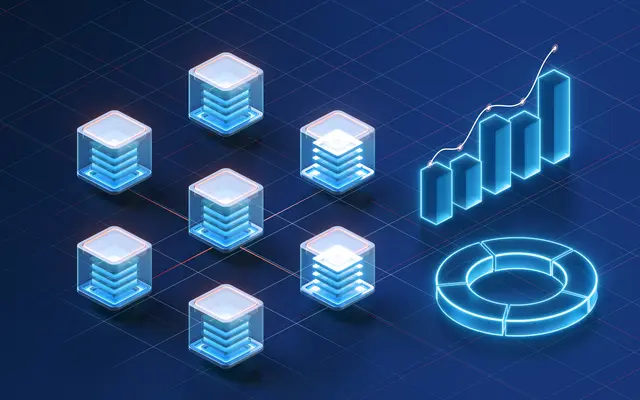Embracing Cross-Docking Automation: A Journey to Supply Chain Excellence
Cross-docking is a crucial process in the supply chain industry, but it can be fraught with challenges. Cross-Docking Automation is the key to unlocking the full potential of cross-docking, streamlining the process, and achieving efficiency and accuracy.
Python, AI, and cloud-based solutions are the driving forces behind Cross-Docking Automation. These technologies empower businesses to automate tasks, optimize processes, and gain real-time visibility into their supply chains. By embracing Cross-Docking Automation, businesses can unlock a myriad of benefits, including:
- Reduced inventory holding costs
- Streamlined order fulfillment processes
- Improved supply chain agility
- Enhanced customer satisfaction
If you’re looking to optimize your supply chain and gain a competitive edge, Cross-Docking Automation is the answer. Let’s dive into the world of Cross-Docking Automation and explore how it can transform your supply chain.

Unleashing the Power of Python, AI, and Cloud for Cross-Docking Automation
Python, AI, and cloud technologies are the cornerstone of Cross-Docking Automation. Let’s delve into how each of these components contributes to the success of automated cross-docking:
Python: The Foundation for Unattended and Attended Bots
Python’s versatility and ease of use make it an ideal choice for developing both unattended and attended bots for Cross-Docking Automation.
-
Unattended Bots: Python enables the creation of unattended bots that can operate autonomously, performing repetitive tasks such as sorting and routing shipments based on pre-defined rules. These bots work tirelessly, 24/7, to keep the cross-docking process running smoothly.
-
Attended Bots: Python’s rich libraries and customizable nature allow for the development of attended bots that assist human workers in cross-docking operations. These bots can provide real-time guidance, automate data entry, and handle exceptions, enhancing productivity and accuracy.
Cloud Platforms: The Orchestrator for Seamless Automation
Cloud platforms offer a comprehensive suite of features and capabilities that far surpass traditional RPA/workflow tools orchestrators. These platforms provide:
-
Scalability: Cloud platforms can easily scale up or down to meet changing demands, ensuring that your Cross-Docking Automation system can handle peak volumes without disruption.
-
Reliability: Cloud platforms are designed to be highly reliable, with built-in redundancy and disaster recovery mechanisms to ensure that your automation system is always up and running.
-
Integration: Cloud platforms seamlessly integrate with other business systems, such as ERPs and WMSs, enabling end-to-end automation across your supply chain.
AI: The Catalyst for Accuracy and Efficiency
AI techniques, such as image recognition, natural language processing (NLP), and Generative AI, play a crucial role in enhancing the accuracy and efficiency of Cross-Docking Automation:
-
Image Recognition: AI-powered image recognition systems can automatically identify and classify incoming shipments based on their labels or packaging, eliminating the need for manual inspection.
-
NLP: NLP-based bots can extract key information from shipping documents, such as destination and delivery schedules, ensuring accurate sorting and routing.
-
Generative AI: Generative AI techniques can be used to generate natural language instructions for unattended bots, making them more adaptable to changing business rules and requirements.
By harnessing the power of Python, AI, and cloud technologies, businesses can unlock the full potential of Cross-Docking Automation, achieving unprecedented levels of efficiency, accuracy, and agility in their supply chains.

Building the Cross-Docking Automation Powerhouse with Python and Cloud
To build a robust and effective Cross-Docking Automation system, it’s essential to break down the process into smaller, manageable sub-processes. Here’s how to approach each sub-process using Python and cloud technologies:
1. Shipment Identification and Sorting
- Utilize Python’s image recognition libraries to automatically identify incoming shipments based on labels or packaging.
- Integrate with cloud-based object detection services to enhance accuracy and speed.
- Develop sorting algorithms to route shipments to the appropriate outbound dock based on destination and delivery schedule.
2. Carrier and Logistics Coordination
- Build Python scripts to automate communication with carriers and logistics partners.
- Use cloud-based APIs to track vehicle arrival and departure times in real-time.
- Implement exception handling mechanisms to address delays or disruptions.
3. Material Handling Automation
- Integrate with automated material handling equipment, such as conveyors and forklifts, using Python scripts.
- Utilize cloud-based IoT platforms to monitor equipment status and performance.
- Develop algorithms to optimize the movement of goods between inbound and outbound docks.
4. Real-Time Tracking and Monitoring
- Leverage Python’s data processing capabilities to collect and analyze shipment status data.
- Build dashboards on cloud platforms to provide real-time visibility into cross-docking operations.
- Implement alerts and notifications to flag any potential issues or delays.
Data Security and Compliance
Data security and compliance are paramount in the supply chain industry. Python and cloud platforms offer robust security features to protect sensitive data, including:
- Encryption at rest and in transit
- Role-based access control
- Compliance with industry regulations (e.g., HIPAA, GDPR)
Python vs. No-Code RPA/Workflow Tools
While pre-built RPA/workflow tools offer a quick and easy solution, they come with limitations:
- Limited Customization: These tools often lack the flexibility to handle complex or unique cross-docking scenarios.
- Vendor Lock-in: Businesses become dependent on the specific tool vendor, limiting their options for future expansion or integration.
- Performance Bottlenecks: No-code tools can be slower and less efficient compared to custom-built Python solutions.
In contrast, Python provides:
- Unmatched Flexibility: Python’s open-source nature allows for extensive customization and integration with other systems.
- Scalability: Python can handle high volumes of data and complex automation processes with ease.
- Proven Performance: Python is renowned for its speed and efficiency, ensuring seamless cross-docking operations.
At Algorythum, we believe in empowering businesses with tailored solutions that meet their unique requirements. That’s why we take a Python-first approach, enabling our clients to build robust, scalable, and secure Cross-Docking Automation systems that drive supply chain excellence.

The Future of Cross-Docking Automation
The possibilities for extending Cross-Docking Automation using future technologies are endless. Here are a few potential avenues for innovation:
-
Blockchain Integration: Blockchain technology can enhance transparency and traceability in cross-docking operations, providing a secure and immutable record of all transactions.
-
Autonomous Vehicles: Self-driving vehicles have the potential to revolutionize the transportation of goods, enabling automated delivery and pickup of shipments.
-
Predictive Analytics: By leveraging machine learning algorithms, Cross-Docking Automation systems can predict demand patterns and optimize inventory levels, reducing waste and improving efficiency.
-
Robotics: Collaborative robots can assist with tasks such as palletizing, depalletizing, and order picking, further automating the cross-docking process.
As these technologies mature, we expect to see even more transformative applications for Cross-Docking Automation.
Subscribe to Algorythum to stay updated on the latest advancements in supply chain automation.
Contact our team today for a free feasibility and cost-estimate for your custom Cross-Docking Automation requirements. Together, let’s unlock the full potential of your supply chain and drive business success.

Algorythum – Your Partner in Automations and Beyond
At Algorythum, we specialize in crafting custom RPA solutions with Python, specifically tailored to your industry. We break free from the limitations of off-the-shelf tools, offering:
- A team of Automation & DevSecOps Experts: Deeply experienced in building scalable and efficient automation solutions for various businesses in all industries.
- Reduced Automation Maintenance Costs: Our code is clear, maintainable, and minimizes future upkeep expenses (up to 90% reduction compared to platforms).
- Future-Proof Solutions: You own the code, ensuring flexibility and adaptability as your processes and regulations evolve.









